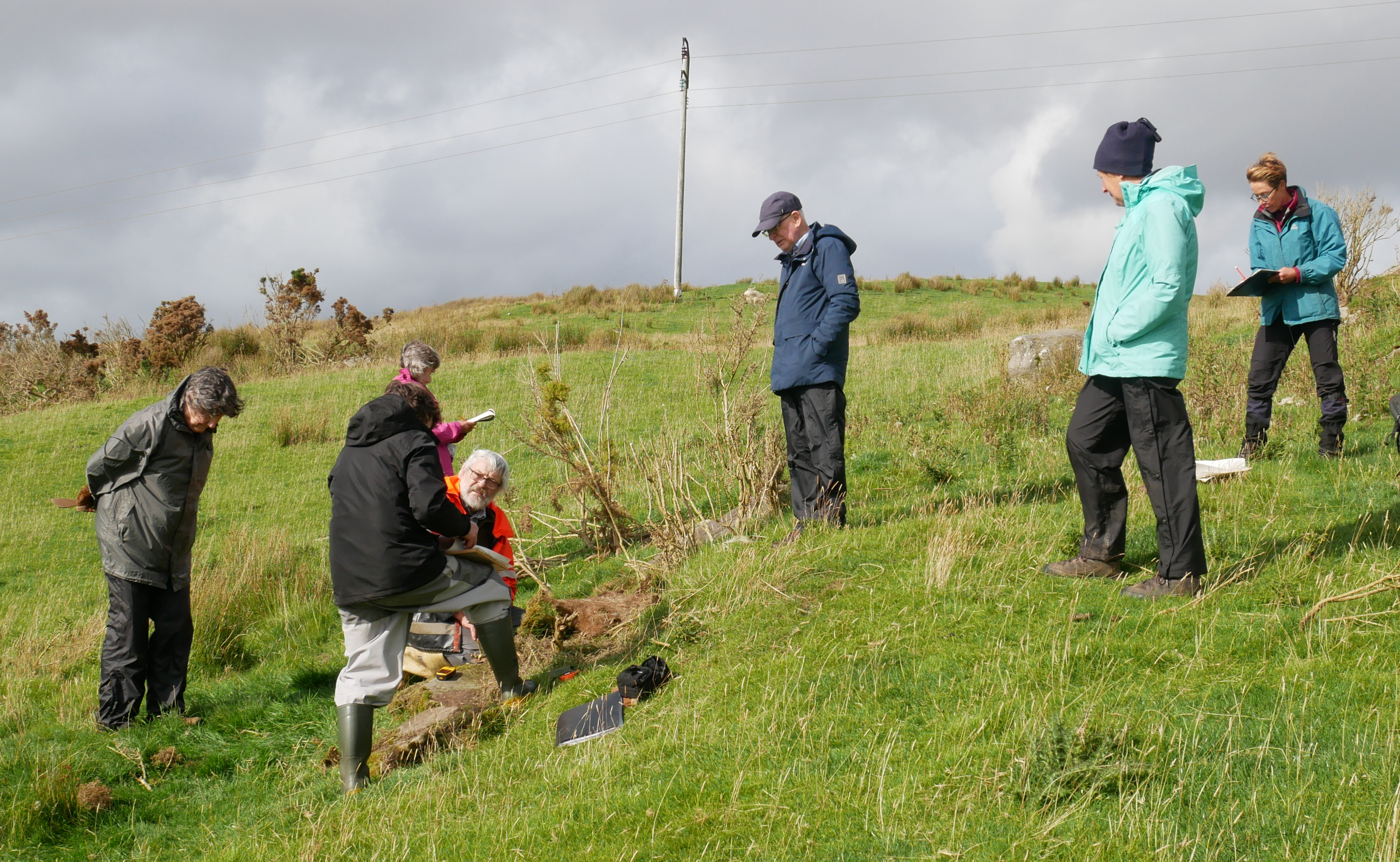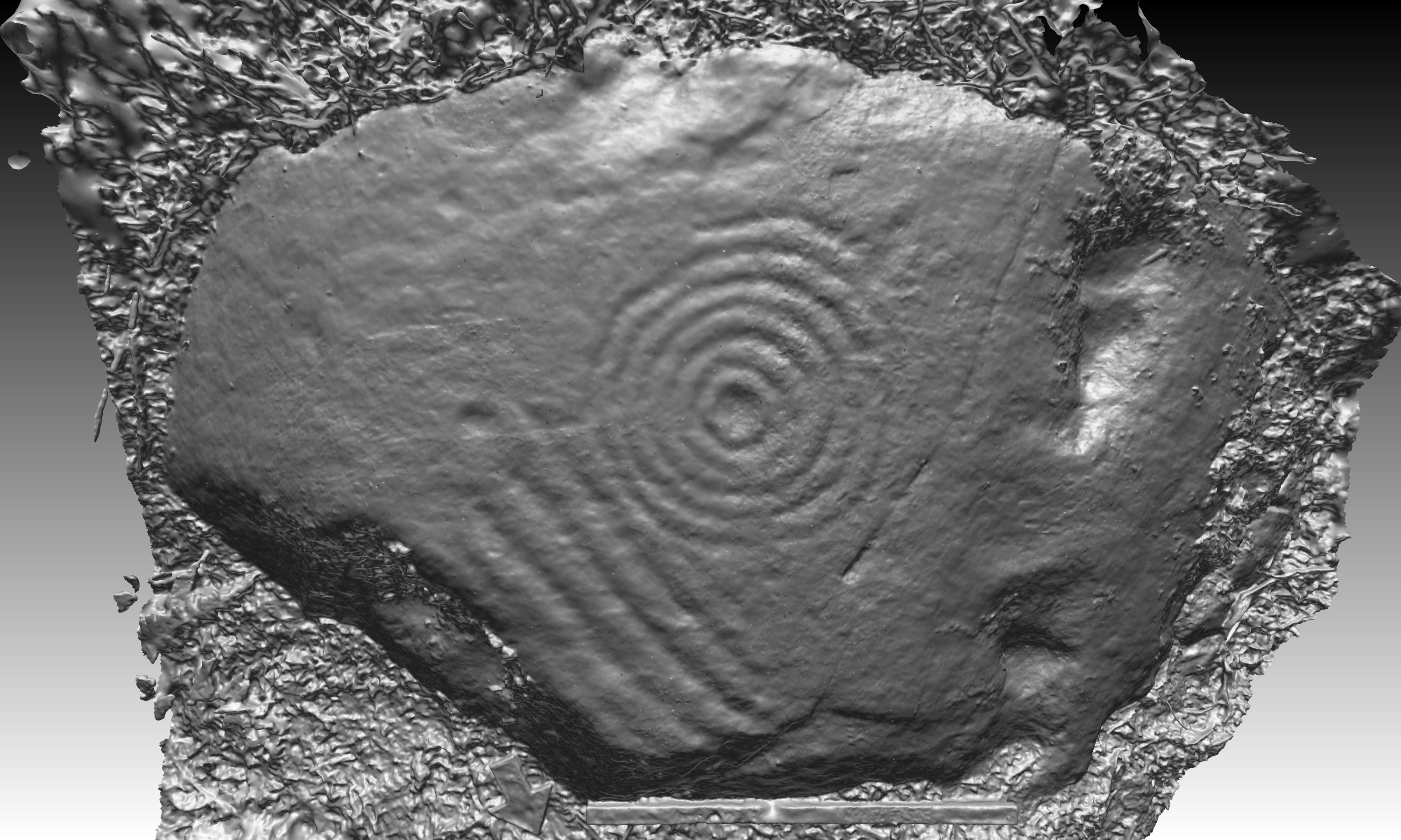Over the past four years Scotland’s Rock Art Project (ScRAP) has generated a large volume of digital data through field recording and 3D modelling of rock art. The data, co-created by the project team and trained community teams, has greatly improved our knowledge of Neolithic rock art in Scotland. The project team have used the data to contribute to academic journals, as well as a new publication scheduled for 2023. On top of this ScRAP aims to preserve and share the data, to promote future research and public awareness.
I joined ScRAP as a digital archivist in April 2021. My background is in archives management and digital preservation, having worked for both the National Library of Scotland and Historic Environment Scotland (HES). My goal is to scope the ScRAP data to be archived, identify appropriate metadata standards, and communicate with different archive stakeholders. Following this I will archive the dataset in the HES digital repository, with a secondary deposit at the University of Edinburgh’s DataShare.

The Rock Art Bute team at work at Glenvoidean 19. DP 354787
My goal is to ensure that the data are archived to a high standard. I evaluate this using FAIR principles, alongside other international standards. FAIR principles (Findable, Accessible, Interoperable, Re-usable) establish a foundation for good data preservation. I am grateful to Peter McKeague who has evaluated FAIR principles against the HES digital repository and its public access website, Canmore. On top of this I have developed a metadata standard that draws from General International Standard Archival Description and HES digital archive cataloguing policies. I also reviewed best practice guidance for archiving 3D photogrammetry developed by Archaeological Data Service, HES, Historic England, and the Royal Commission for Archaeological and Historical Monuments in Wales.
ScRAP’s digital archive includes: 3D models, as well as raw photographs and model screenshots; contextual photographs taken during fieldwork; location and panel sketches. These primary data will be archived alongside fieldwork descriptions for each rock art panel, both of which will be put into Scotland’s National Record for the Historic Environment. This record can be accessed through the public website Canmore.

A sketch of Prieston 3. SC 2174085
Cataloguing records is a time-consuming process. On an average day I will review a set of data, identify suitable records for long-term retention, ingest these records into our long-term preservation system, and assign appropriate metadata. I have automated this process where possible, which allows me to focus on more complicated panel records. I also contribute to internal and external publicity regarding the ScRAP archive.
I am currently processing records in alphabetical order by council area. At the end of July 2021 I had processed all the records from Argyll and Bute (over 300 panels!). This includes over 300 GB of data, comprising over 52,000 digital files.

A snapshot of the 3D model for Blairbuy 3. DP 361475
You can view data in the HES Digital Archive through the Canmore website. Through Canmore you can navigate the catalogue hierarchy, or search for individual rock art panels. Most of these panels have been linked to site records in our GIS database, giving a more comprehensive overview of the national record for these archaeological monuments. You can view digital images via Canmore and request higher resolution images, as well as 3D models and raw photogrammetry photographs, from our Public Services team. Any images or models you ask for will be provided free of charge.
Until the end of the project in December 2021 I will continue to archive fieldwork data gathered before September 2021. Following this I will deposit a secondary archive with all the data with the University of Edinburgh DataShare, as well as with appropriate HERs. Our current plans are to keep the ScRAP website and database as an online resource post-project for at least five years, but after September 2021 any new rock art data will be submitted directly to Canmore.